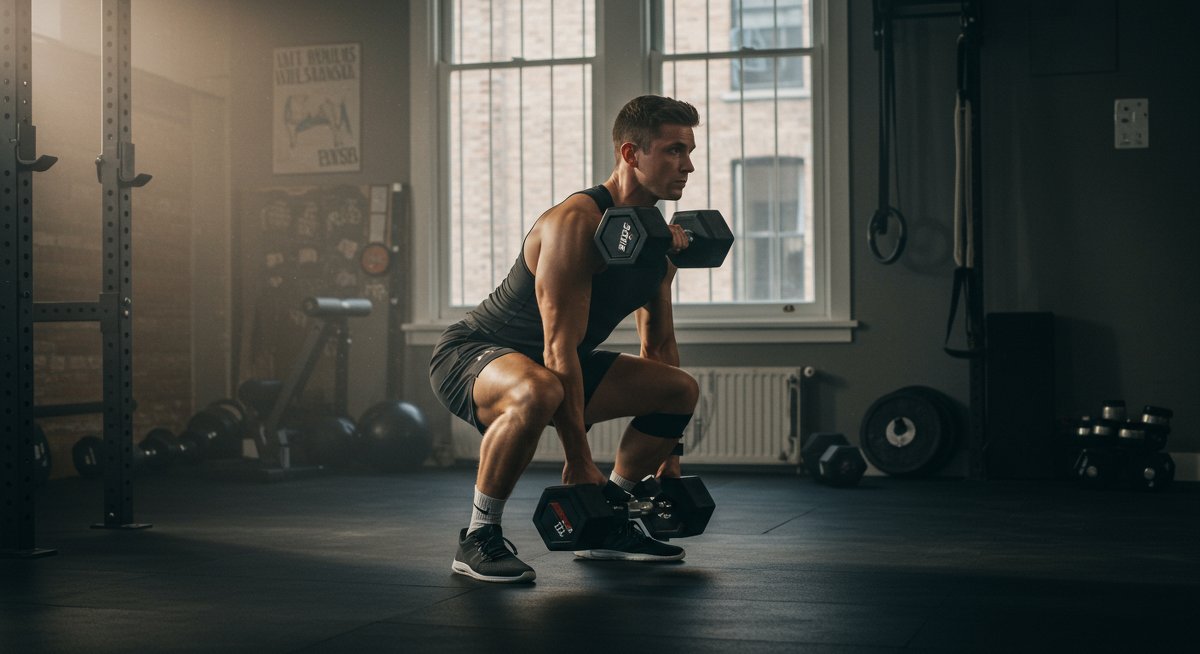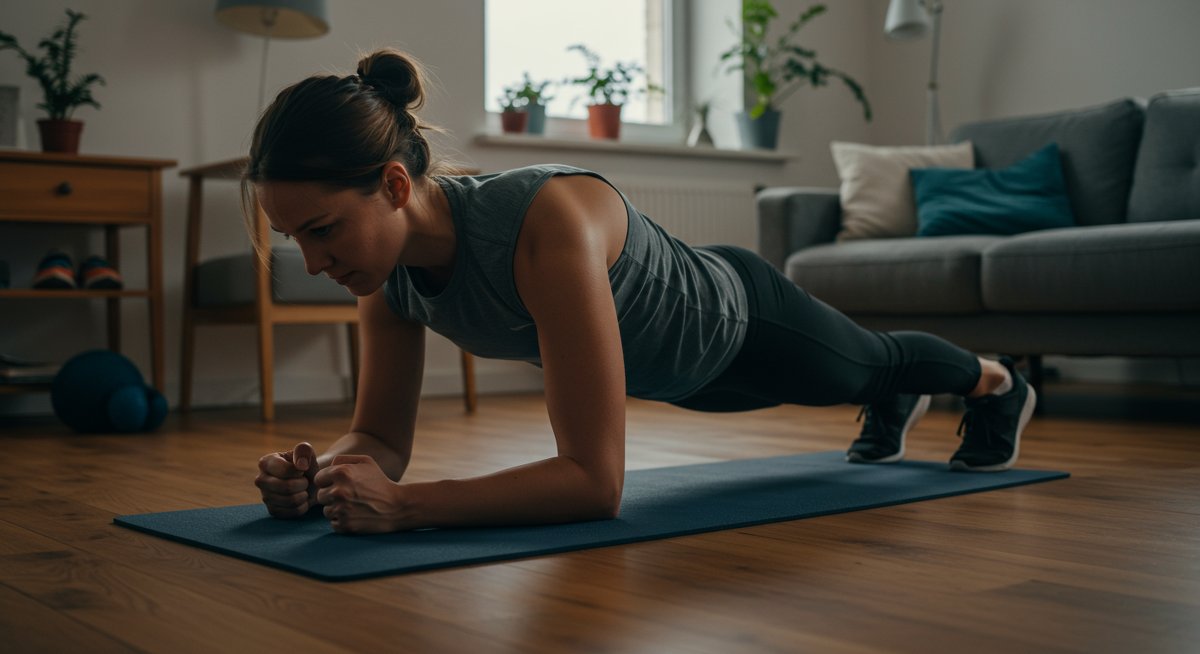The Endless Quest for the Perfect Home Gym
So, I was browsing r/homegym the other day, and I came across a post that really resonated with me. The user was talking about how their home gym will perpetually be in the “work in progress” phase. It’s so true! It feels like you're never really done. There's always some new piece of equipment you're eyeing, some upgrade you're planning, or some reorganization you're dreaming up. This isn't a bad thing, though. In fact, I think it’s part of what makes having a home gym so enjoyable.
It’s a constant evolution, a reflection of your changing fitness goals, your growing knowledge, and, let's be honest, your gear acquisition syndrome. That post got me thinking about my own home gym, the journey it's been, and why I suspect it will always be a work in progress. It's not about perfection; it's about progress, adaptation, and creating a space that truly supports your fitness journey.

Why the "Work in Progress" Phase is Inevitable
Here's the thing: fitness is dynamic. What you need today might not be what you need a year from now. Maybe you started with basic dumbbells and a pull-up bar, focusing on foundational strength. But then you get into powerlifting and suddenly you need a squat rack, a barbell, and a ton of weight plates. Or maybe you discover a love for calisthenics and start adding gymnastic rings, parallettes, and a stall bar. Your needs change, and your gym evolves with them.
Beyond changing fitness goals, there's also the constant stream of new and innovative equipment hitting the market. Remember when functional trainers were only found in commercial gyms? Now, there are compact, affordable options for home use (like the Ancore Pro 65 lbs mentioned in the Reddit post). As technology advances and our understanding of exercise improves, new tools will emerge, tempting us to upgrade and expand our home gyms. Plus, sometimes you just want to replace older equipment. That bench that seemed great when you started might not be so comfortable or sturdy after a year of heavy use.
What This Means for Your Fitness Goals
This constant evolution isn't just about accumulating more stuff. It's about creating a space that is optimized for your specific needs and goals. Think of your home gym as a personalized fitness laboratory. You can experiment with different equipment, try new training styles, and create an environment that motivates you to push your limits. This level of customization is hard to achieve in a commercial gym, where you're limited by the available equipment and the preferences of the masses.
Embrace the "work in progress" mentality. Don't feel pressured to have the "perfect" home gym right away. Start with the essentials and gradually add equipment as your needs and goals evolve. Research carefully, read reviews, and don't be afraid to try new things. This is your space, so make it your own. I can tell you that I have bought and sold so many things as my fitness journey advanced, so don't be afraid to start simple and adjust as needed. You might find that having that perfect setup at home makes you even more likely to actually put the work in and stay consistent.
The Truth About Home Gym Plateaus
Okay, let's be real. Building a home gym isn't always sunshine and rainbows. There are challenges, plateaus, and moments of frustration. One of the biggest hurdles is space. Unless you have a dedicated room or a large garage, you'll likely be limited in the amount of equipment you can realistically fit. This can be especially frustrating when you see other people's sprawling home gyms online and feel like you're missing out.
Another challenge is the cost. Quality fitness equipment can be expensive, and it's easy to get caught up in the hype and spend more than you can afford. It's important to set a budget, prioritize your needs, and be patient. Don't feel like you have to buy everything at once. Start with the essentials and gradually add more equipment as you can afford it. Also, consider buying used equipment. You can often find great deals on Craigslist, Facebook Marketplace, or local fitness equipment forums. The key is to not get discouraged. Everyone starts somewhere, and even the most impressive home gyms started with just a few basic pieces of equipment.
Tailoring Your Home Gym to Your Life
So, how do you make this "work in progress" approach work for your life? It's all about adaptation and personalization. Consider your space, your budget, your fitness goals, and your lifestyle. If you're short on space, focus on multi-functional equipment like adjustable dumbbells, resistance bands, or a suspension trainer. If you're on a tight budget, prioritize the essentials and look for used equipment deals. If you travel frequently, consider portable options like resistance bands or a jump rope.
The key is to create a home gym that fits seamlessly into your life. It should be a space that you enjoy using and that helps you achieve your fitness goals without adding unnecessary stress or complexity. Also, think about how you can modify equipment to fit your needs. I have a small apartment, so I had to get creative with storage and placement. I use foldable equipment that can be easily stowed away when not in use. I also have a few pieces of equipment that serve multiple purposes, like a weight bench that can be used for both bench presses and dumbbell rows. The more you tailor your gym to your life, the easier it will be to stay consistent and motivated.
A Step-by-Step Guide to Building Your Dream Home Gym
Okay, so how do you actually put this into practice? Here’s a step-by-step guide to building your dream home gym, one piece at a time:
- Assess your space: Measure the area you have available and consider the ceiling height. This will help you determine what kind of equipment you can realistically fit.
- Define your goals: What are you hoping to achieve with your home gym? Weight loss? Muscle gain? Improved cardiovascular health? Your goals will dictate the type of equipment you need.
- Set a budget: How much are you willing to spend on your home gym? Be realistic and don't feel pressured to buy everything at once.
- Prioritize the essentials: Start with the most important pieces of equipment that will help you achieve your goals. For example, if you're focused on strength training, you'll need a squat rack, a barbell, and weight plates.
- Shop around: Compare prices from different retailers and consider buying used equipment. Don't be afraid to negotiate.
- Read reviews: Before you buy anything, read reviews from other users to get an idea of the quality and durability of the equipment.
- Start small: Don't try to build your dream home gym overnight. Start with a few basic pieces of equipment and gradually add more as you need it.

My Personal Take on This Endless Project
So, here's my take on all this. I think the "work in progress" nature of home gyms is actually a huge advantage. It allows you to constantly adapt, experiment, and optimize your space to meet your evolving needs and goals. It's a far cry from the cookie-cutter experience you get at a commercial gym. Instead, you have the freedom to create a truly personalized fitness environment.
Don't get discouraged by the feeling that you're never "done." Embrace the journey, enjoy the process, and celebrate the small victories along the way. Every new piece of equipment, every new workout, every new personal best is a testament to your dedication and commitment. Your home gym is more than just a place to exercise; it's a reflection of your fitness journey. And like any good journey, it's constantly evolving.